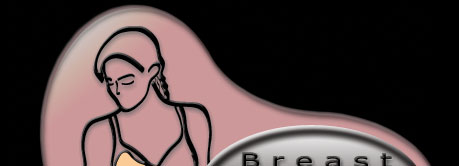 |
Revised: Mar. 31, 2003 |
 |
 |
 |
Materials used in commercial breast forms |
|---|
|
 |
The predominant material used in the more expensive commercial breast
forms is silicone gel inside a very thin, slick plastic shell with tapered
edges. Other materials such as rubber/latex, foam, or cotton batting are
sometimes used. Here are the main qualities of each of the types of materials
used to help in deciding if a certain material is right for you:
Silicone
| Good Points |
- The material gives the form a comparable weight, movement and
feel of a natural breast.
- The silicone can be colored; many forms of this type are available
in a variety of shades to match skin tone.
- Realistic nipples and areolas can also be produced.
- The material of this type of form warms to your body temperature
and feels very comfortable.
- Silicone can be whipped with air to produce forms just as
realistic, yet are much lighter to wear.
- It is NOT the same material that was used in breast implants. It
is similar, but the main problem with silicone implants came from
their use INSIDE the body. Even if a breast form is punctured, the
contents can not be absorbed through the skin.
|
|---|
| Bad Points |
- Silicone forms are expensive, ranging anywhere
from 100-450$ U.S. per form (and sometimes even more.)
- Many silicone forms come in only 1-3 color shades. While this is
still more shades than any of the other material options, people
are not limited to just a few different colors. People's skin
shades even differ with the season and the amount of sun their
skin receives...a silicone form can not adapt to these changes.
- Even given the variety of shapes, sizes and styles of silicone
breast forms, you may not be able to find the right match for an
existing breast.
- Possibility of built-in nipple not matching color, shape or size
of one on an existing breast.
- Built-in or attachable nipples will not react to temperature
changes (become erect) like a real nipple will, so, all other
things being equal, there may be some external visual differences between
a silicone form and an existing breast in certain circumstances.
|
|---|
Rubber/Latex
| Good Points |
Cheaper
alternative to silicone, while still retaining some of the
qualities of silicone that make it so desirable. |
|---|
| Bad Points |
While
still having some of the qualities of silicone to a certain
degree, rubber/latex can not dare to match the weight,
feel or movement of even the cheapest silicone forms. Some
people are allergic to rubber or latex. |
|---|
Foam
| Good Points |
Commercial
foam forms are very cheap and can even be easily homemade. Can't be punctured
or ruptured like silicone forms. Holds shape well, even in restrictive wear like
sports bras. |
|---|
| Bad Points |
Will
not likely have the drape, weight or movement approximating
a real breast. The primary goal of this type of form is to
approach the shape of the natural breast. |
|---|
Cotton Batting
| Good Points |
- Very cheap and easily home made.
- Soft and comfortable against post-surgery, healing tissue.
- This type of form can be a good way to estimate what cup size
might fit best for your frame and body type.
- Can restore the visual and dimensional balance of a missing breast.
|
|---|
| Bad Points |
- VERY light and has no draping qualities
- Can even become lumpy or distorted over time, especially if
under-filled.
- This type of form will not move the way a natural breast
* * * * * * * * * * * * * * * * * * * * * * * * * * * * * * *
* * * * * * * * * * * * * * * * * * * * * * * * * * * * * * * *
* * * * * * * * * * * * * * * * * * *
|
|---|
|
|---|

